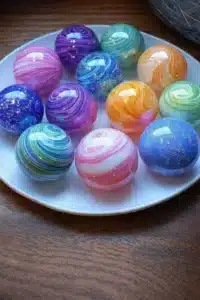What’s pink, ancient, and taking kitchens by storm? Yes — Japanese pink salt! This delicate yet mineral-rich seasoning isn’t just gorgeous; it’s packed with flavor and wellness benefits. Whether you’re a foodie or health enthusiast, this guide is your ticket to mastering the Japanese Pink Salt Recipe right at home.
From sushi to detox drinks, pink salt is the new must-have in 2025. Keep reading — I’ll show you how to make it, why it’s special, and how Japan’s chefs use it every day!
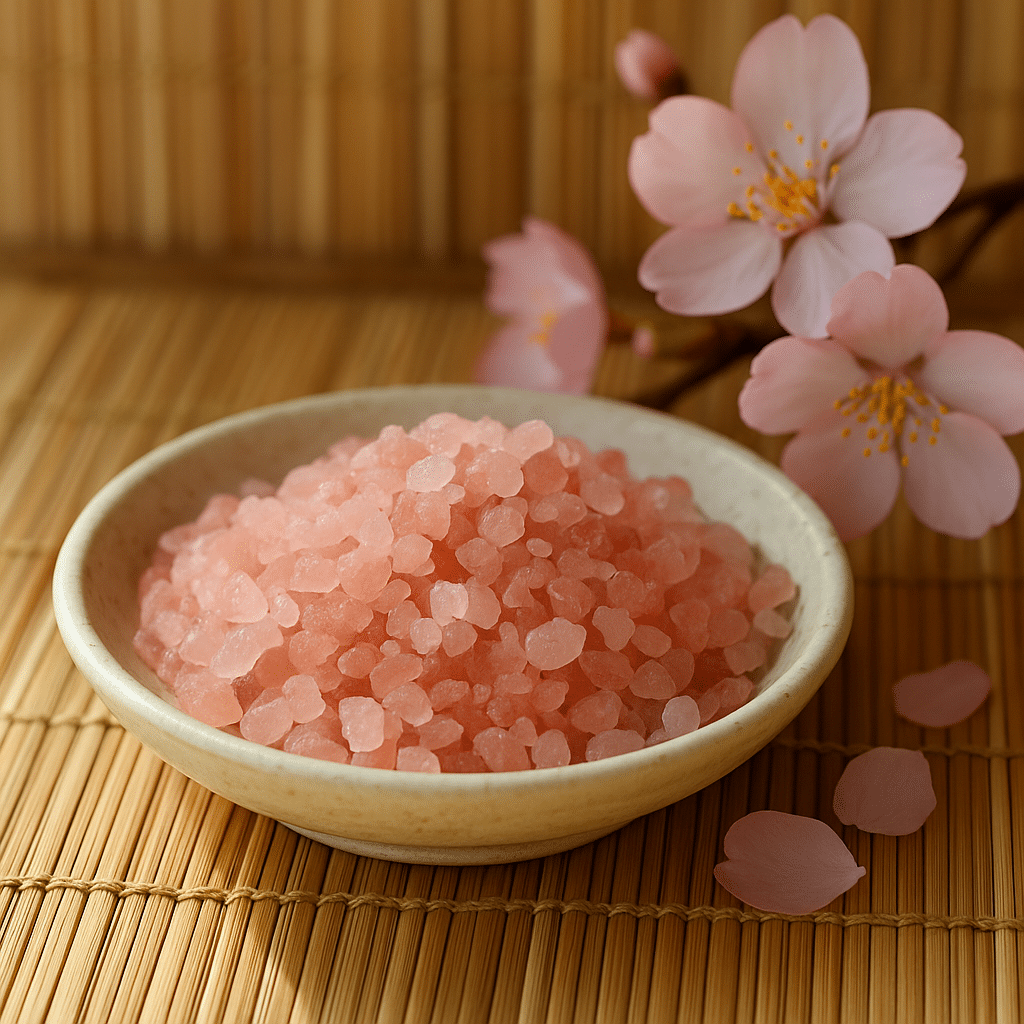
Table of Contents
Table of Contents
What Is Japanese Pink Salt? The Secret Behind the Japanese Pink Salt Recipe
Okay, I’ll be real with you — the first time I tried a Japanese pink salt recipe, I totally messed it up. I figured, “It’s just salt, how hard could it be?” Well, turns out, not all pink salts are created equal. And making authentic Japanese pink salt is way more nuanced than tossing sea salt in a blender and hoping for the best.
Traditional Origins of the Japanese Pink Salt Recipe
I first heard about Japanese pink salt recipes from a sushi chef in Osaka. He told me how coastal villages used to harvest mineral-rich seawater and let it dry naturally under the sun. That’s how they got that delicate blush tone — no artificial dyes, just honest-to-goodness nature. Traditional Japanese pink salt isn’t a gimmick. It’s been used for centuries in everything from tofu seasoning to preserving sakura petals. Pretty cool, right?
Back then, it was considered kind of special. They’d sprinkle it on delicate dishes like sashimi and rice balls. A simple Japanese pink salt recipe was more about highlighting the food than overpowering it. That’s something I learned the hard way — the first time I made it, I used way too much kombu powder. It tasted like seaweed overload!
What Makes Japanese Pink Salt Special?
Unlike Himalayan salt, which comes from ancient rock formations, Japanese pink salt recipes rely on fresh sea salt that’s rich in magnesium, potassium, and trace minerals. This not only gives it a softer pink hue but also a cleaner, almost sweet finish. I remember tasting it side by side with regular sea salt and thinking, “Wow…this is different.”
The texture is another game-changer. Authentic Japanese pink salt recipes produce salt that’s finer and almost silky. Chefs love it because it dissolves more evenly, especially when finishing off grilled fish or fresh tofu. If you’re using big, chunky Himalayan crystals, trust me — you’re missing out.
Why Japanese Pink Salt Is More Than Just a Trend
I’ve seen Japanese pink salt recipes blow up on social media lately — people using them for detox drinks, skincare scrubs, and all kinds of wellness hacks. Personally? I stick to food. But hey, if adding some pink salt to your bath makes you feel fancy, go for it.
My tip? Keep your Japanese pink salt recipe simple. Use high-quality sea salt, skip artificial additives, and let the minerals do their thing. Once you taste that gentle, oceanic flavor, you’ll understand why chefs treat this salt like gold.
Final confession: every time I make a fresh batch of my own Japanese pink salt recipe, I feel like I’m part of some ancient culinary secret. And that, my friend, is worth a little extra effort.
Print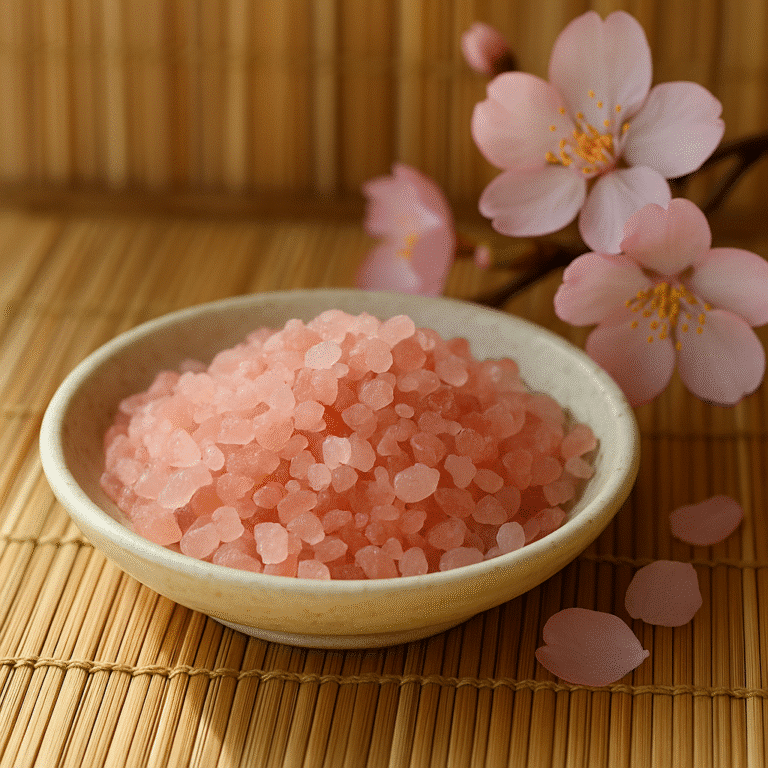
Japanese Pink Salt Recipe: How to Make and Use This Trendy Mineral Boost (2025 Guide)
Delicate and mineral-rich, Japanese Pink Salt is the ancient seasoning trend now transforming modern kitchens. With subtle umami and natural oceanic minerals, it’s perfect for sushi, detox drinks, and wellness dishes.
- Total Time: 10 minutes
- Yield: 1 jar 1x
Ingredients
- 1 cup coarse Japanese sea salt (preferably from Okinawa or Seto Inland Sea)
- 1/4 tsp kombu powder
- Dried sakura petals (optional)
- 1/8 tsp yuzu peel powder
- Optional: small amount of matcha powder or dried shiso leaf
Instructions
- Using a mortar and pestle or spice grinder, grind the coarse sea salt until fine but not powdered.
- Add kombu powder, slightly crushed sakura petals (if using), and yuzu peel powder.
- Blend gently until mixture turns soft pink with delicate specks.
- Store your Japanese pink salt in a sealed glass jar to maintain freshness.
- Use as a finishing salt for sushi, sashimi, grilled fish, tofu, pickled vegetables, or even morning detox water.
Notes
Use high-quality sea salt for best flavor. Avoid overheating during grinding to preserve texture. Store in a glass jar to prevent flavor contamination.
- Prep Time: 10 minutes
- Cook Time: 0 minutes
- Category: Seasoning
- Method: Hand Ground
- Cuisine: Japanese
Nutrition
- Serving Size: 1 pinch
- Calories: 0
- Sugar: 0g
- Sodium: 380mg
- Fat: 0g
- Saturated Fat: 0g
- Unsaturated Fat: 0g
- Trans Fat: 0g
- Carbohydrates: 0g
- Fiber: 0g
- Protein: 0g
- Cholesterol: 0mg
Authentic Japanese Pink Salt Recipe (Step-by-Step Method)
Okay, full confession time: when I first tried making my own Japanese pink salt recipe, I thought I could just buy any old pink salt, toss in some dried flowers, and call it “artisan.” Spoiler: it tasted like flavored chalk. But after a few failed batches (and a lot of Googling), I finally cracked what makes an authentic Japanese pink salt recipe actually worth its pretty pink color.
Let me walk you through the exact method I use now. Learn from my mistakes!
Read: Pink Salt Trick Recipe 2025: Simple Morning Ritual for Hydration & Weight Loss Boost
My Go-To Ingredients for an Authentic Japanese Pink Salt Recipe
At first, I thought the secret was the color. Nope — it’s the minerals and balance of flavors.
For a legit Japanese pink salt recipe, here’s what you actually need:
- Coarse Japanese sea salt (about 1 cup). Try to get salt harvested from Okinawa or Seto Inland Sea if you can. It’s purer and naturally pinkish.
- Kombu powder (¼ tsp). Adds a subtle umami kick without overpowering.
- Dried sakura petals (optional, but honestly, so worth it for the floral hint and aesthetics).
- Yuzu peel powder (⅛ tsp). I tried skipping this once and regretted it – the citrus aroma really lifts the whole thing.
Optional extras? Matcha powder or even tiny bits of dried shiso leaf if you’re feeling adventurous. Just don’t overdo it; trust me, I’ve made that mistake. The goal with any Japanese pink salt recipe is subtlety.
Grinding, Blending, and Storing Tips
Now, here’s where things went wrong for me at first: grinding.
- Step 1: Use a mortar and pestle or a spice grinder. Don’t use a food processor — the heat will mess with the salt’s texture.
- Step 2: Start with the sea salt and pulse lightly. You want it fine but not powdered.
- Step 3: Add kombu powder, sakura petals (crush them slightly), and yuzu peel. Blend until the mixture looks soft pink with delicate specks.
- Step 4: Store your finished Japanese pink salt recipe in a glass jar with a tight lid. Avoid plastic – it can absorb flavors. Mine stays fresh for up to 6 months.
Bonus tip: if you’re like me and forget recipes the minute you close your browser, print a little recipe card and tape it inside your pantry. I finally did this after my third batch of ruined salt.
Why This Method Works
What I love about this process is how therapeutic it feels. Grinding salt by hand? Weirdly relaxing. Plus, customizing your own Japanese pink salt recipe lets you control the flavors — whether you’re making a batch for sushi night or little gift jars for friends (which, by the way, everyone loves).
My biggest fail? Adding too much yuzu powder once. It turned bitter and made my tofu taste like perfume. So yeah, less is more.
Since mastering this Japanese pink salt recipe, I use it on grilled salmon, avocado toast, even popcorn. Pink salt snob? Maybe. But once you taste the difference, you’ll get why.

How to Use Japanese Pink Salt Recipe in Japanese Cooking
I’ll admit — when I first made my own Japanese pink salt recipe, I wasn’t exactly sure what to do with it. I mean, yeah, it looked fancy sitting in a little jar on my counter, but using it? That felt intimidating. Thankfully, after a few failed experiments (and more than one overly salty miso soup), I figured out some simple, tasty ways to use this delicate seasoning like a pro.
Sprinkle It on Sushi, Sashimi, and Miso Soup
One of the easiest ways to use your homemade Japanese pink salt recipe? Just sprinkle it.
I started with sushi. Instead of dipping my nigiri in soy sauce, I lightly dusted a pinch of pink salt right over the fish. Total game changer. The salt’s subtle mineral flavor enhances the raw fish without overpowering it. Same goes for sashimi — especially buttery cuts like salmon or toro.
And miso soup? I messed up the first time and added a full teaspoon of my Japanese pink salt recipe directly into the broth. Way too much. Lesson learned: a small pinch at the end, just before serving, makes the miso taste richer without turning it into a salt bomb.
Salt-Cure Pickled Veggies (Tsukemono)
Now, this next use surprised me. Traditional tsukemono — those crunchy, tangy pickled veggies — often start with a basic salt cure. I decided to swap regular sea salt for my Japanese pink salt recipe. Wow. The difference? Subtle but noticeable.
After layering cucumber slices with pink salt and letting them sit for an hour, the resulting pickles tasted fresher and had this gentle ocean flavor. I tried it with thin-cut radishes too. Definitely recommend experimenting with salt-curing if you’re into pickled sides.
Finish Steaks, Tofu, and Grilled Fish
I’ll be honest: I never thought of finishing my grilled steaks with pink salt. Then I saw a Japanese chef doing exactly that.
A light sprinkle of Japanese pink salt recipe after cooking makes grilled fish pop. I tried it on salmon fillets — amazing. Even better? On grilled tofu. The salt’s fine texture melts slightly into the hot tofu, creating this delicate umami crust that’s honestly addicting.
For steak, just a small dusting after resting the meat adds that perfect mineral crunch.
Why Chefs Love Japanese Pink Salt’s Subtle Flavor
What makes this salt special is that it doesn’t scream “salty.” I used to think more salt meant more flavor — wrong. Japanese chefs rely on Japanese pink salt recipes because they know subtlety is key.
Pink salt adds complexity, not just saltiness. It’s all about enhancing the food’s natural taste without stealing the spotlight. The first time I got that right, I finally understood why chefs swear by it.
So whether you’re seasoning sushi or finishing a grilled fillet, keep it light. Your homemade Japanese pink salt recipe deserves to be savored, not dumped. And yeah… I had to learn that the hard way.
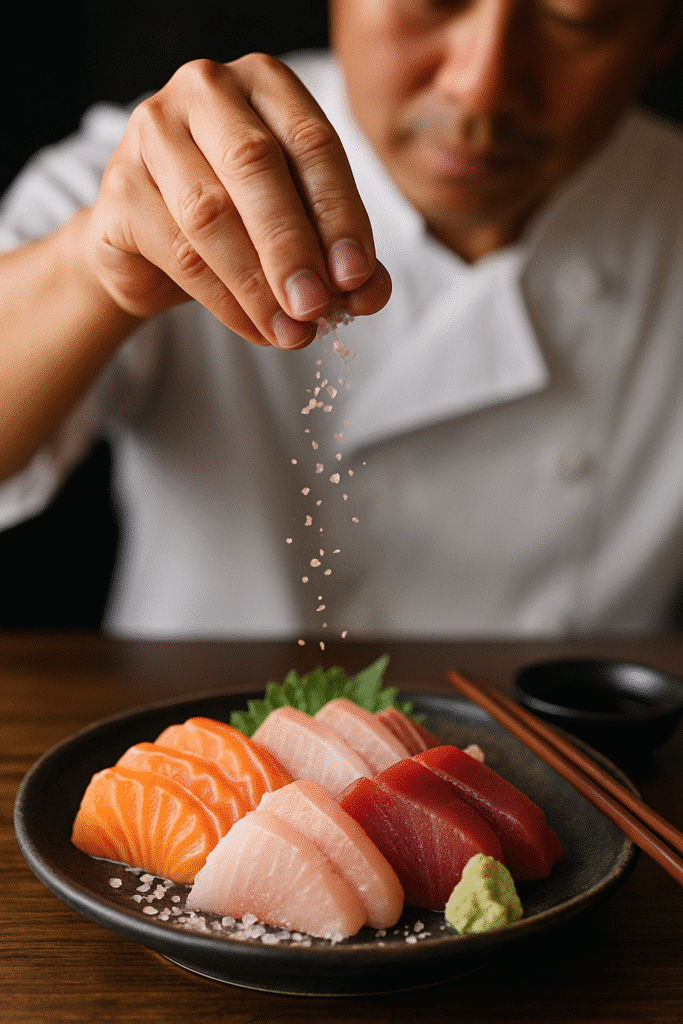
Japanese Pink Salt Recipe Benefits: Health Perks Backed by Science
I’ll be honest, when I first started using my homemade Japanese pink salt recipe, I wasn’t thinking about health. I was just chasing that subtle, fancy flavor. But the more I read (and the more I talked to chefs and nutrition nerds), the more I realized that this pretty pink salt actually comes packed with legit health benefits. We’re not talking magic cures here, but real mineral perks that go way beyond plain old table salt.
It’s All About the Minerals
Here’s where Japanese pink salt recipes shine — minerals. Unlike that bleached white stuff in your average shaker, Japanese pink salt is loaded with trace minerals your body actually uses. We’re talking magnesium, potassium, and calcium.
Magnesium, for example, helps with muscle function. I didn’t know that until I got curious why my homemade pink salt tasted slightly “softer” than other salts. Turns out? Magnesium gives it that mellow finish — plus it supports nerve function. Potassium helps regulate fluids and balance electrolytes. And calcium? Well, you probably already know that’s important for bones.
Each time you sprinkle your Japanese pink salt recipe on dinner, you’re not just adding flavor; you’re sneaking in tiny boosts of minerals that your body craves.
Detoxifying Effects — Are They Real?
I used to think “detox” was just marketing fluff. Then I dug a little deeper.
Japanese pink salt contains trace minerals like iron and zinc, both linked to supporting the body’s natural detox pathways. Now, is sprinkling a bit of salt gonna detox your whole system? Probably not. But adding mineral-rich salt like your homemade Japanese pink salt recipe can help balance your body’s overall mineral intake, which supports metabolic health.
I’ve started adding a pinch to my morning lemon water (yes, I’ve become that person). It gives a slight oceanic kick — and honestly, I feel less bloated afterward. Placebo? Maybe. But it works for me.
Hydration and Electrolyte Balance
This one surprised me. Did you know that using your Japanese pink salt recipe can help with hydration?
Sodium isn’t just for flavor — it’s essential for fluid balance. When paired with minerals like potassium and magnesium, pink salt helps regulate electrolytes in your body. After a sweaty workout or a hot day, I’ll sometimes sip water with a tiny pinch of pink salt mixed in. Helps me avoid that “crashing tired” feeling.
Way better than chugging sugary sports drinks.
Does It Help With Blood Pressure?
Ah, the age-old salt debate. Too much sodium raises blood pressure, right? Mostly true — but with a twist.
Regular table salt is stripped of minerals and usually contains anti-caking agents. That’s not the case with your homemade Japanese pink salt recipe. The presence of potassium and magnesium actually helps counteract sodium’s harsh effects, according to some studies. Of course, moderation still matters — I learned that after over-salting my miso soup once and feeling pretty gross after.
Bottom line: if you’re swapping out table salt, using your Japanese pink salt recipe in small amounts is likely a better choice for your heart.
Better Than Himalayan Salt?
I get this question a lot: “Why not just use Himalayan salt?”
Don’t get me wrong, Himalayan salt’s fine. But it tends to have larger crystals, a harsher flavor, and more iron — which gives it that deep pink color. My Japanese pink salt recipe, by contrast, is softer in both texture and taste. Plus, the sea-sourced minerals from Japan’s coastal waters give it a unique nutrient profile that rock salt can’t really match.
Plus, let’s be real — blending your own Japanese pink salt recipe at home feels way cooler than buying yet another bag of Himalayan crystals.
In short? You’re not just seasoning food. You’re nourishing your body in a subtle, natural way. Not bad for a simple sprinkle of pink.
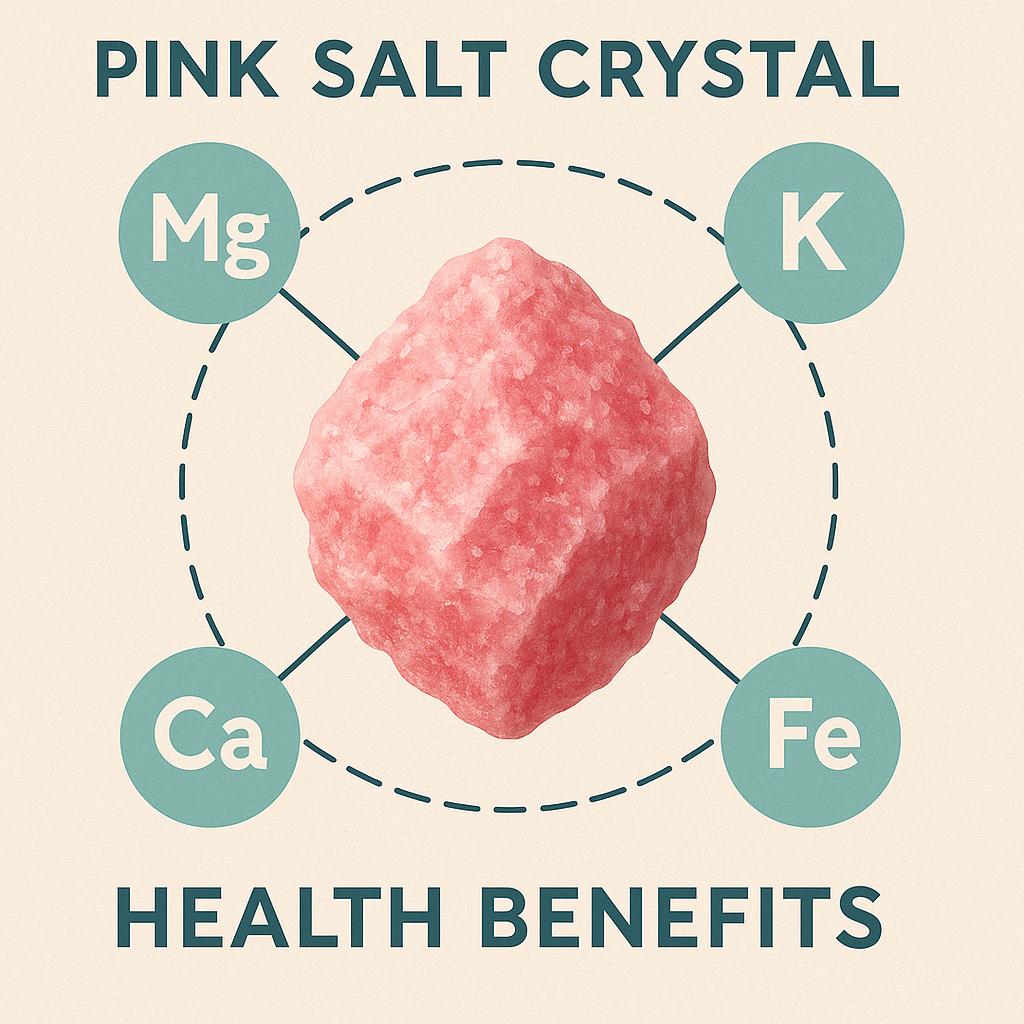
Where to Buy Authentic Japanese Pink Salt Recipe Ingredients
So here’s the thing — when I first wanted to make my own Japanese pink salt recipe, I assumed I could just grab some “pink salt” from the grocery store and call it a day. Big mistake. That stuff? Almost always Himalayan. And while Himalayan pink salt is fine for basic cooking, it’s totally different from authentic Japanese pink salt recipe ingredients.
Let me save you from making the same mistake I did. Here’s exactly where to buy the good stuff and how to spot the real deal.
My Go-To Japanese Suppliers and Online Shops
After way too many hours scrolling online, I’ve found a few reliable places that carry authentic Japanese pink salt recipe ingredients:
- Nihon Ichiban – This site specializes in Japanese artisanal products, and they sometimes stock Okinawan sea salt blends perfect for pink salt recipes.
- Japan Centre (UK-based, but they ship worldwide) – I’ve had good luck grabbing basic Japanese sea salt here, which works as the base for a traditional Japanese pink salt recipe.
- Amazon Japan (with international shipping) – Trickier to navigate, but if you search for “沖縄の塩” (Okinawan salt), you’ll find good options.
- Local Japanese grocery stores – If you’re lucky enough to live near a Japanese supermarket, check their seasoning section. Look for salt labeled “Okinawa” or “Seto Inland Sea.”
I learned the hard way that “pink salt” isn’t always what it claims to be. Do your homework before hitting “buy now.”
How to Verify Real Japanese Pink Salt (Avoid Himalayan Confusion)
This part tripped me up. Tons of products labeled as “pink salt” are actually Himalayan salt imported from Pakistan. Authentic Japanese pink salt recipe ingredients should list the origin clearly: look for “Made in Japan” or regional labels like “Okinawan salt” or “Setouchi salt.”
Check the ingredient list too. Pure Japanese pink salt shouldn’t have additives or artificial coloring. If the color looks neon pink? Run.
Another tip? Real Japanese pink salt recipe ingredients usually come in smaller packages. No giant 5-pound bags like you’ll see with Himalayan salt. Think boutique, not bulk.
Prices, Packaging, and Sourcing Tips
Here’s the truth: authentic ingredients for your Japanese pink salt recipe aren’t super cheap. Expect to pay around $8 to $15 for 200-300 grams of good-quality Japanese sea salt.
As for packaging, most authentic salts come in simple resealable pouches with minimal English labeling. Japanese brands lean toward understated design — if the package looks too flashy, it’s probably not legit.
If you’re unsure, always check customer reviews. That’s how I avoided accidentally buying cheap dyed salt last time.
What to Avoid: Fake or Low-Quality Pink Salt
When shopping for your Japanese pink salt recipe, avoid:
- Products labeled as “Himalayan pink salt” (obviously).
- Bright neon pink crystals (they’re often dyed).
- Salts from unknown or generic brands with no clear sourcing info.
- Plastic-tasting salts — yes, that’s a thing. I once bought cheap sea salt that absorbed the flavor of its plastic bag. Never again.
My best advice? When in doubt, buy small batches first. Once you find a supplier you trust, stock up.
Bottom line? Making your own Japanese pink salt recipe starts with sourcing honest, mineral-rich salt from real Japanese producers. Trust me — your taste buds will thank you. And you’ll avoid spending $20 on yet another bag of fake pink rocks. Learned that lesson the hard way.
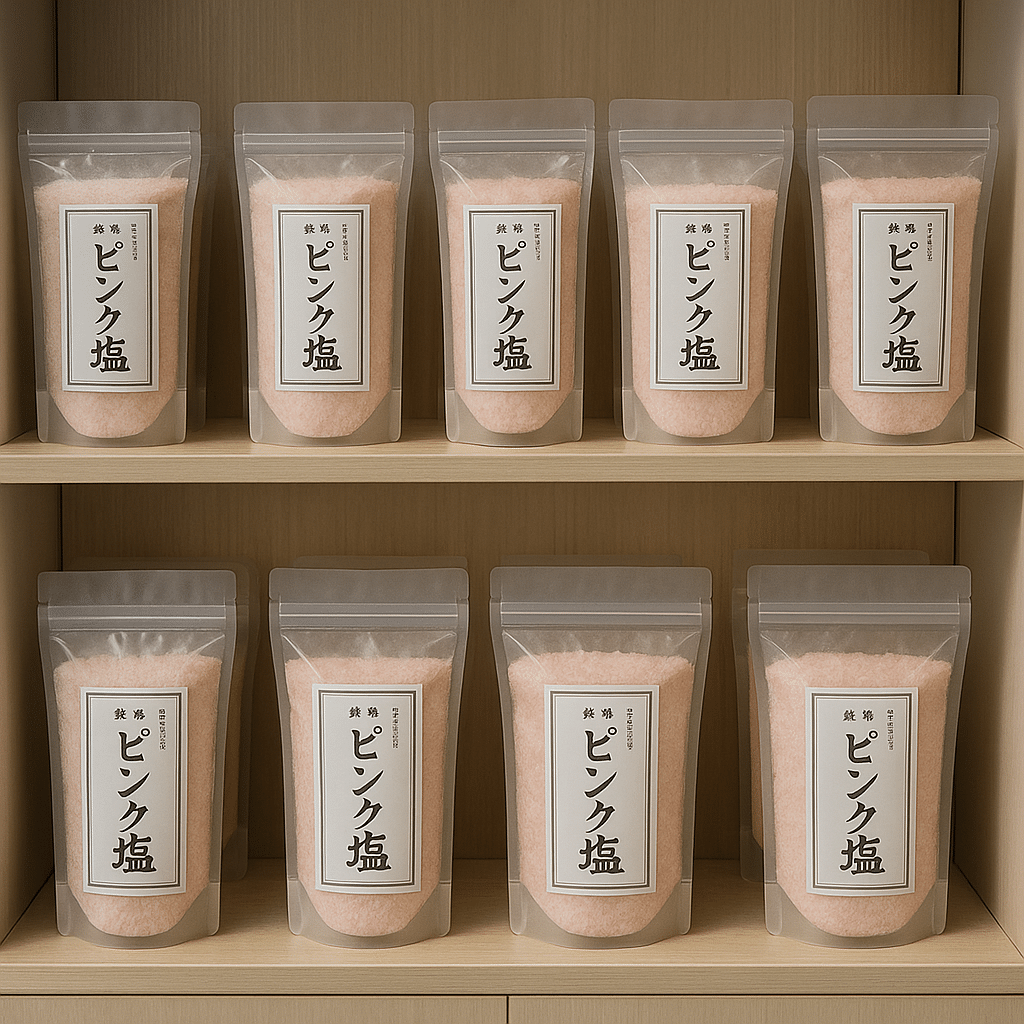
Japanese Pink Salt Recipe Trend: Why It’s Viral in 2025
Honestly? I didn’t see this coming. Back when I first started messing with my Japanese pink salt recipe, it was this niche thing. Something I read about in obscure Japanese cookbooks or heard whispered in foodie forums. Fast forward to 2025 — and now everyone from wellness bloggers to celebrity chefs is hyping pink salt like it’s liquid gold. Actually, correction: they’re calling it “pink gold.” Yeah. That’s a thing now.
Why TikTok and Instagram Are Obsessed
Let’s start with TikTok. One day, I’m scrolling, and suddenly my feed is full of influencers showing off these artsy jars of Japanese pink salt recipe blends. People are filming themselves sprinkling it on everything from avocado toast to ramen. Some even mix it into lemonade for what they’re calling “pink detox water.” Crazy? Maybe. But the videos look gorgeous.
Instagram’s just as wild. Foodies are posting aesthetic flat lays of their homemade pink salt jars beside sakura petals and yuzu rinds. And every post has captions like “#japanesepinksaltrecipe” or “secret salt blend.” It’s trendy, it’s pretty, and apparently… it sells.
I tried posting my own salt jar pic once. Not gonna lie — it got more likes than any of my recipe posts that month.
Wellness Bloggers Are Hooked
Here’s where things get weird. Wellness influencers are now using their Japanese pink salt recipes not just in food, but for detox drinks and even DIY beauty scrubs.
One blogger I follow swears by adding a pinch of pink salt to her morning lemon water. Another’s raving about how her homemade pink salt scrub “revitalizes skin” (I tried it… felt gritty, but my hands did feel soft afterward).
And suddenly, pink salt’s no longer just a seasoning. It’s a “mineral beauty essential.”
Celebrity Chefs? Oh, They’re On Board
I saw this coming. When top Japanese chefs like Hiroshi Tanaka start sprinkling Japanese pink salt recipes over sushi live on cooking shows, you know the trend’s legit.
Now, Western chefs are getting into it too. Gordon Ramsay (yep, the man himself) used a Japanese pink salt finisher on seared tuna in a 2025 special. People lost their minds.
Honestly, when chefs say pink salt “completes the dish,” people listen.
Skincare Brands Are Catching the Wave
In Tokyo, it’s not uncommon now to see bath soaks and facial scrubs labeled with “pink salt from Okinawa.” Some skincare companies are adding powdered versions of Japanese pink salt recipe blends into their exfoliating products.
Is it actually better for your skin? I don’t know. But the branding? Absolutely flawless.
Why It’s Called “Pink Gold”
By early 2025, food magazines started dubbing Japanese pink salt recipe blends as “pink gold.” It’s rare, pretty, and supposedly “mineral-rich wellness in a jar.”
And with demand exploding, prices have jumped too. What I used to buy for $8 a pouch? Selling for double now in specialty shops.
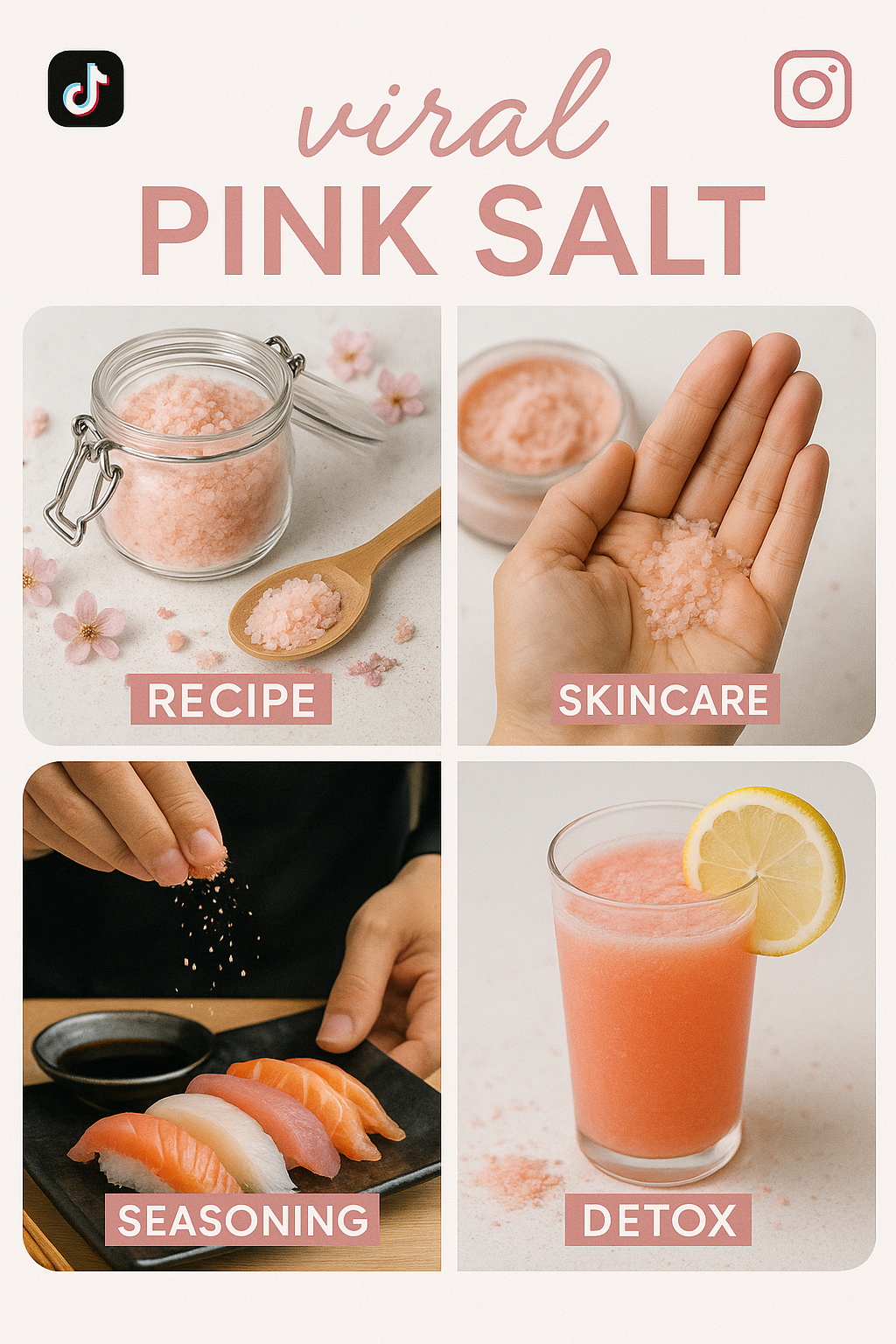
So, ready to turn your kitchen pink? From its gorgeous crystals to its ancient mineral power, Japanese Pink Salt Recipes are more than just seasoning – they’re a culinary and wellness secret. I hope this guide inspired you to create your own at home and embrace this flavorful trend.
💖 Love this recipe? Share it on Pinterest and inspire your friends to sprinkle a little pink magic on their meals!
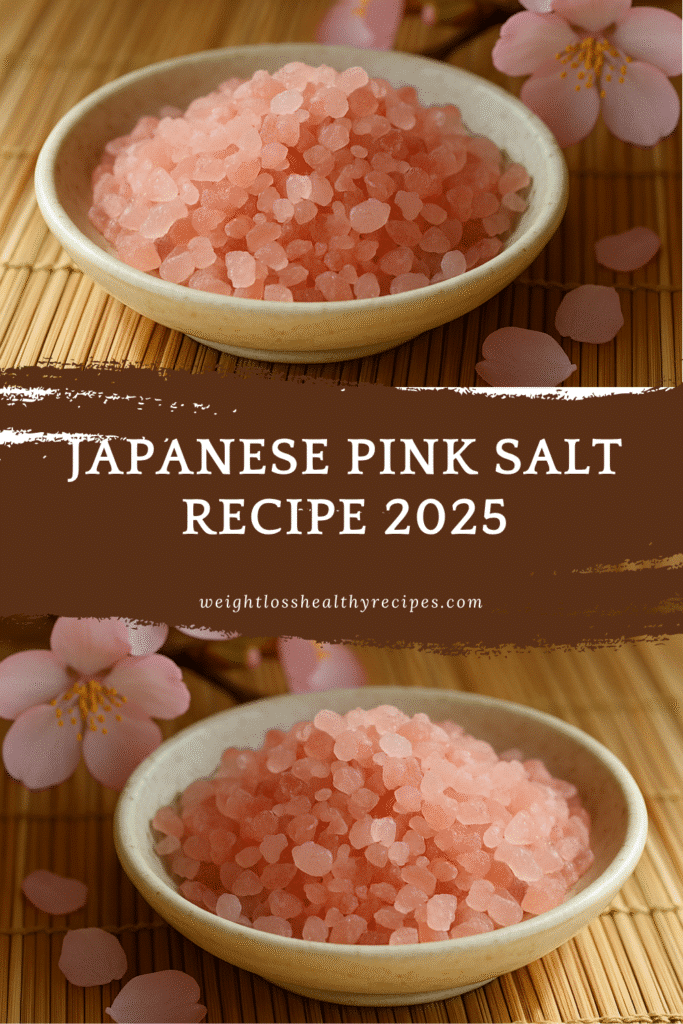
FAQs: Japanese Pink Salt Recipe
What is Japanese pink salt?
Japanese pink salt is a mineral-rich sea salt harvested from coastal regions of Japan, typically Okinawa or the Seto Inland Sea. It has a delicate pink color from natural trace minerals like magnesium, potassium, and calcium.
How is Japanese pink salt different from Himalayan pink salt?
While Himalayan pink salt comes from ancient rock deposits in Pakistan, Japanese pink salt is harvested from modern seawater. Japanese pink salt is finer, softer in flavor, and typically contains different mineral balances, making it less harsh than Himalayan varieties.
How do I make a Japanese pink salt recipe at home?
To make a traditional Japanese pink salt recipe, blend coarse Japanese sea salt with small amounts of kombu powder, dried sakura petals, and yuzu peel. Use a mortar and pestle or spice grinder for a smooth texture, and store it in a glass jar for freshness.
Where can I buy authentic Japanese pink salt?
You can buy authentic Japanese pink salt or base sea salt from specialty Japanese grocery stores, Nihon Ichiban, Japan Centre, or online marketplaces like Amazon Japan. Always check the label for origin – it should say “Made in Japan.”
Why is Japanese pink salt popular in 2025?
Japanese pink salt is trending due to its appearance in viral TikTok recipes, beauty scrubs, and detox drinks. Influencers, chefs, and wellness bloggers love it for both its flavor and its “pink gold” aesthetic.
Can I use Japanese pink salt in skincare?
Yes. Many people use their homemade Japanese pink salt recipe in exfoliating scrubs or bath soaks thanks to its natural minerals. Always patch-test if you have sensitive skin.
Is Japanese pink salt healthy?
Used in moderation, Japanese pink salt can offer health benefits from its minerals like magnesium, potassium, and calcium, supporting hydration and electrolyte balance.
What does Japanese pink salt taste like?
It has a delicate, oceanic flavor – less sharp than table salt or Himalayan salt. It subtly enhances dishes without overpowering them.
How do chefs use Japanese pink salt?
Japanese chefs typically use pink salt as a finishing salt on sashimi, grilled fish, tofu, or vegetables. It’s also used in pickling (tsukemono) and sometimes in miso soup for depth of flavor.
How should I store my homemade Japanese pink salt recipe?
Keep your Japanese pink salt in an airtight glass jar, away from moisture and sunlight. This helps preserve its texture and flavor for up to 6 months.


